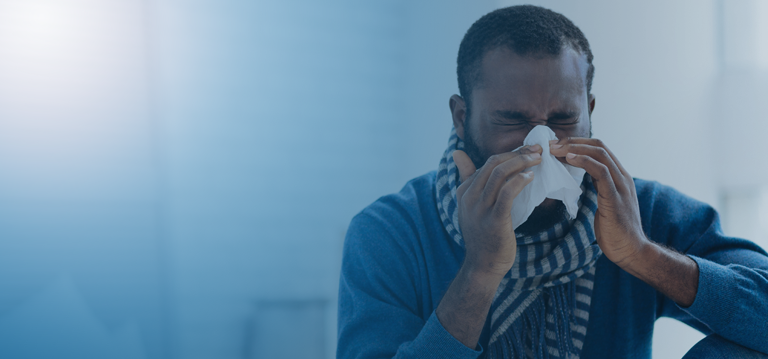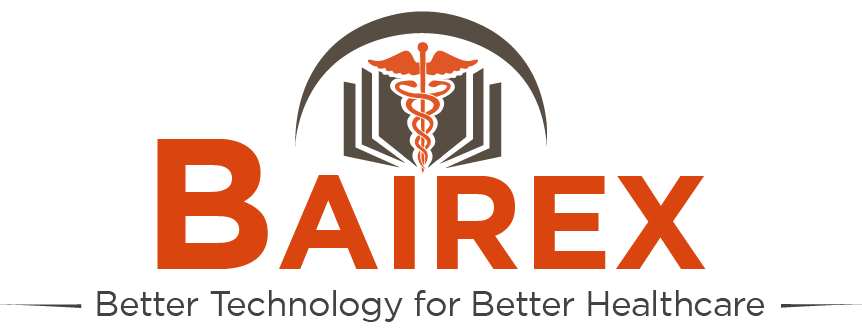Latest on COVID-19
- Home
- Latest on COVID-19
Why businesses need air hygiene to protect their workplaces from COVID-19

The COVID-19 pandemic has almost overnight changed the working practices of millions of people around the world. For many people, working from home has become routine for several months while those who have continued in their workplace have had to follow new working practices and procedures aimed at preventing the transmission of infection.
Anyone returning to their workplace – and to educational institutions, cafés, restaurants and shops – will be nervous about becoming infected when they come into closer contact with other people in public areas. Everyone is aware of the risks of infection from airborne particles and the guidelines for social distancing.
Keeping a set distance apart, however, may not be enough to prevent contaminated particles transferring from infected people to others. Research has shown that the smallest particles can travel farther and remain airborne for much longer than previously thought.
This means air hygiene is a crucial factor in protecting people in the workplace and other indoor environments and should be included in the package of measures businesses take to prevent transmission of COVID-19.
It’s also important for employees to see that their air quality is being improved. In an international survey of office workers commissioned by Rentokil Initial in March 2020, over two-thirds of survey respondents said they would feel cared for by their employer if indoor air quality were being monitored or regulated.
Respiratory infections such as COVID-19 are considered to be transmitted by virus-containing respiratory particles. These are often classified by researchers into droplets (>5–15μm) and aerosols (<5–15μm) – an arbitrary classification to differentiate from those that quickly fall to the ground and the lighter ones that can float in the air for long periods.
Particles in a continuum of sizes are exhaled from infected people during breathing, talking, coughing, sneezing – and even singing. Both the droplets and aerosol particles are composed of mucus and saliva made airborne by the air passing over infected tissue throughout the respiratory system.
The majority of droplets are thought to fall out of the air and onto a surface within 1–2m from the infected person. Guidelines from WHO and governments still recommend keeping these distances in places where people interact. So it’s clear that, in addition to distancing, surface and hand hygiene are crucial to prevent cross-contamination from these droplets. But how can businesses offer their staff protection from the lighter aerosols that are floating in the air?
The recommendations for social distancing are based on a 1930s model of droplet transmission and the distance the droplets travel. Scientists who study and model gas clouds, however, have shown that a large proportion of the transmission of COVID-19 could be caused by airborne transmission via aerosols produced during breathing, speaking, sneezing and coughing.
Aerosols can accumulate in enclosed places and remain airborne and infectious for several hours. Due to their tiny size (<10μm), they can be inhaled deep into the lungs. This makes it essential that businesses consider this means of transmission when implementing safety measures in their workplace.
The social distancing guidelines also don’t consider the physics of aerosols that are exhaled as turbulent gas clouds and have a complex behaviour. A gas cloud traps and carries with it clusters of droplets with a continuum of sizes. The warm and moist conditions in the cloud, together with the turbulence, allow the droplets of all sizes to remain airborne for longer and travel several metres farther (7–8m) than the social distancing guidelines.
A proportion fall out as the cloud travels, while others shrink as they evaporate and can float in the air for hours, following the air flow in the room. The faster and more turbulent the cloud – such as from a cough or sneeze – the farther all the droplets travel.
Dr Gail Aitken, FRSPH, Head of Consumable Product Development, Rentokil Initial commented:
“Propulsion, such as sneezes and coughs, helps eject these viruses back into the air. Because these droplets are small, they can be carried on air currents and can remain airborne for considerable periods of time, depending on air traffic and flow, temperature and humidity.”
In many work environments, there’s no way to bring in fresh air, so the most practical way for businesses to remove these from the air is with air purification using filters.
Aside from the scientific basis for viral transmission, there are real-life examples that demonstrate the critical part airflow and aerosols play in air hygiene. A study of infections in China found several people were infected by airborne transmission while in a restaurant.
An infected person sitting at a table in a room infected five other people on two adjacent tables. The three tables were at one end of the room in the air flow from an air conditioning unit on the wall. None of the customers at tables in the other part of the room in different air flows, nor restaurant staff, was infected.
A follow-up study that measured dispersion of tracer gas in the same part of the restaurant and made computer simulations of the spread of aerosols, concluded that the infection was “consistent with a spread pattern of virus-laden aerosols”.
There is rapidly increasing evidence for airborne transmission of COVID-19, as reported above. This means air hygiene around spaces where people are together for long periods is an essential component of air safety measures in indoor spaces such as offices, shops, restaurants, classrooms and public transport.
Bearing in mind that many of us spend 90% of our time indoors, in the current climate, staff are looking for reassurances that it’s safe to return to an enclosed environment for long periods. Employers should, therefore, make sure their indoor air quality (IAQ) is hygienic and of a high standard to prevent transmission of airborne infections via aerosols and respiratory droplets to maintain people’s health and wellbeing.
The WELL Building Standard from the International WELL Building Institute provides several strategies for facilities managers to improve health and wellbeing in buildings by planning infection prevention, preparedness, resilience and recovery. The primary factors for infection prevention are good cleaning protocols, supporting and promoting hand hygiene and improving air quality by providing adequate ventilation and filtration.
The strategy for air quality includes the following measures.
- Air filtration: Implement a suitable air filtration system and maintain filters properly.
- Ventilation: Bring in fresh air from outdoors to dilute human and product-generated air pollutants. Provide demand-control ventilation, displacement ventilation and advanced air distribution
- Openable windows: Provide windows that can open and encourage staff to open them when outdoor air quality is acceptable
- Microbe and mould control: Treat the air with ultraviolet light to kill microorganisms
- Moisture management: Limit moisture accumulation and mould growth by preventing water infiltration and condensation by using suitable design strategies
- Humidity control: Maintain humidity at levels that limit the growth of pathogens and are conducive to health and wellbeing.
The strategies listed above for improving air quality are largely influenced by building design and maintenance. Many modern buildings don’t have windows that can open or they’re kept shut to maintain temperature and humidity. HVAC systems are not effective at filtering pollution generated in the indoor environment. Therefore a filtered HVAC system combined with air purifiers placed in the room can be the most practical solution for businesses to ensure air hygiene.
As the spread of COVID-19 begins with infected respiratory particles, filtering pathogens from the air will be seen by employers and staff as a reassuring and necessary first step to prevent infection, reduce ill-health and absenteeism and keep them safe at work.
Indoor air quality (IAQ) can be quickly improved by installing mobile air purifier devices in the workplace. These can be placed in strategic positions in a wide range of indoor spaces in offices, schools, hotels, care homes and healthcare institutions to yield optimal results for cleaner ‘local’ air. They’re also a visual and reassuring indicator for staff that their employer considers air quality important for their protection while providing peace of mind from the monitoring and display of the IAQ around them.
The air purification devices not only provide businesses with a flexible option for filtering over 99.95% of harmful airborne particulates, including aerosols contaminated with bacteria and viruses from people’s respiratory systems. HEPA 13 and carbon filters also capture gaseous pollutants, mould spores, allergens, smoke particles and VOCs.
In choosing an air purifier for the work environment, there are four critical issues that businesses should consider.
- How efficient are the filters of the device?
- Does it have a high clean air delivery rate (CADR)?
- Is there an option for a service to maintain the filters safely
- Is it cost-effective?
A badly maintained filter can cause additional health problems, so it’s important to choose an air purifier carefully. You can find out more about the dangers of poor air quality and how to maintain air hygiene in the workplace during the COVID-19 crisis in our whitepaper or by talking to us today.
Read more: https://www.initial.com/blog/air-hygiene-to-protect-workplaces-from-covid-19/

